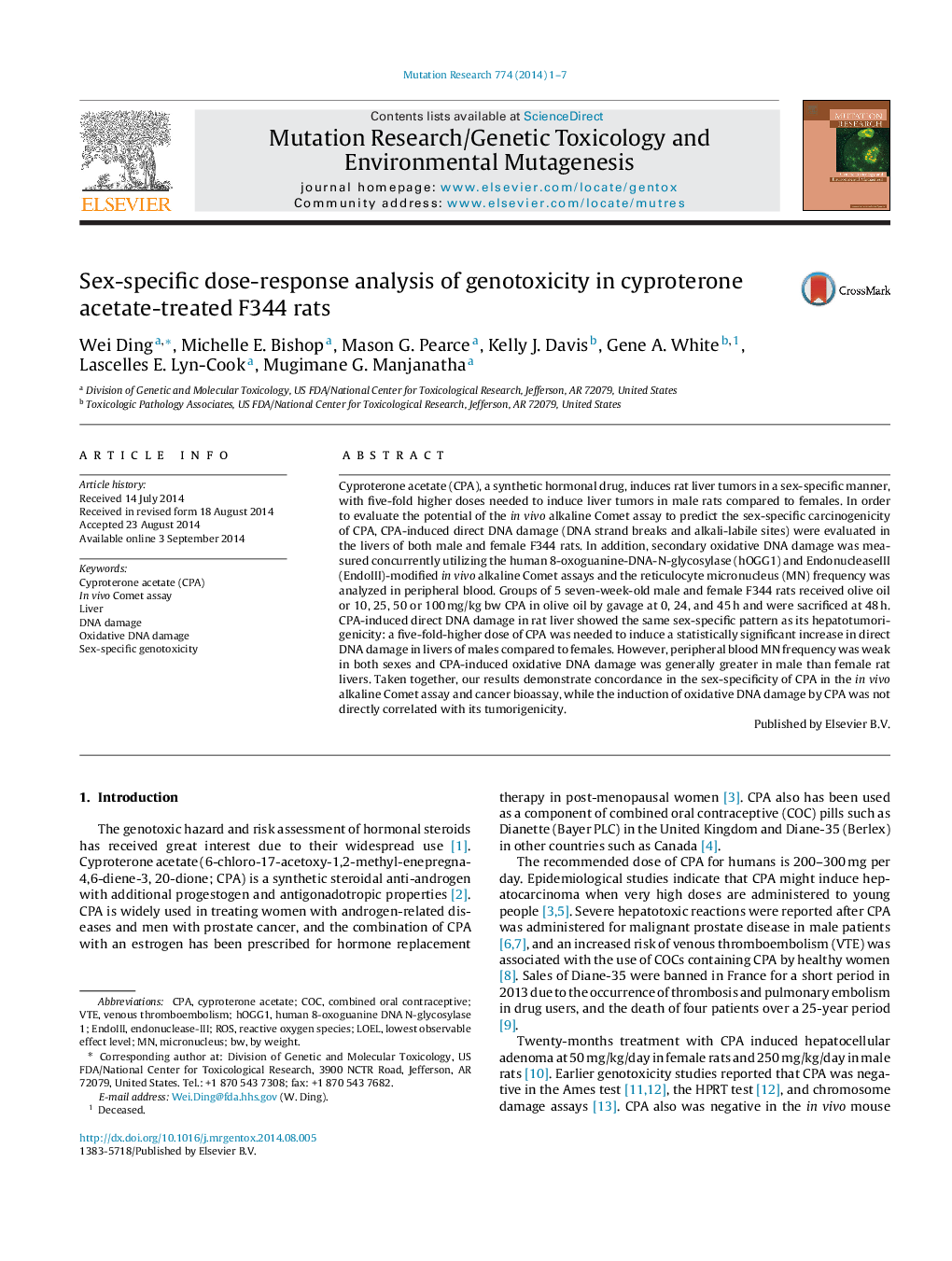| Article ID | Journal | Published Year | Pages | File Type |
|---|---|---|---|---|
| 2147862 | Mutation Research/Genetic Toxicology and Environmental Mutagenesis | 2014 | 7 Pages |
•CPA is a synthetic drug used to treat a variety of conditions in men and women.•CPA is more tumorigenic in female than male rat liver.•Direct DNA damage was greater in female than male rat liver.•Oxidative DNA damage was slightly greater in male than female rat liver.•The sex specificity of direct DNA damage was concordant with CPA tumorigenicity.
Cyproterone acetate (CPA), a synthetic hormonal drug, induces rat liver tumors in a sex-specific manner, with five-fold higher doses needed to induce liver tumors in male rats compared to females. In order to evaluate the potential of the in vivo alkaline Comet assay to predict the sex-specific carcinogenicity of CPA, CPA-induced direct DNA damage (DNA strand breaks and alkali-labile sites) were evaluated in the livers of both male and female F344 rats. In addition, secondary oxidative DNA damage was measured concurrently utilizing the human 8-oxoguanine-DNA-N-glycosylase (hOGG1) and EndonucleaseIII (EndoIII)-modified in vivo alkaline Comet assays and the reticulocyte micronucleus (MN) frequency was analyzed in peripheral blood. Groups of 5 seven-week-old male and female F344 rats received olive oil or 10, 25, 50 or 100 mg/kg bw CPA in olive oil by gavage at 0, 24, and 45 h and were sacrificed at 48 h. CPA-induced direct DNA damage in rat liver showed the same sex-specific pattern as its hepatotumorigenicity: a five-fold-higher dose of CPA was needed to induce a statistically significant increase in direct DNA damage in livers of males compared to females. However, peripheral blood MN frequency was weak in both sexes and CPA-induced oxidative DNA damage was generally greater in male than female rat livers. Taken together, our results demonstrate concordance in the sex-specificity of CPA in the in vivo alkaline Comet assay and cancer bioassay, while the induction of oxidative DNA damage by CPA was not directly correlated with its tumorigenicity.
